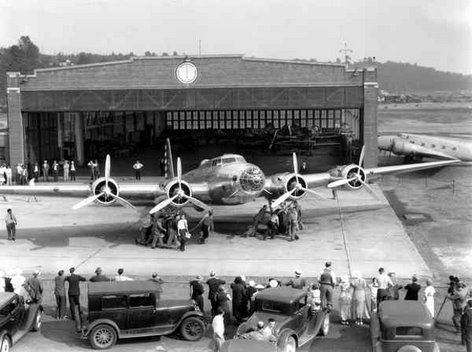
On Wednesday morning, 16 July 1969, the Apollo 11/Saturn V launch vehicle, AS-506), stood on the pad at Launch Complex 39A, Kennedy Space Center, Cape Canaveral, Florida. On board were Neil Alden Armstrong, Mission Commander; Michael Collins, Command Module Pilot; and Edwin E. Aldrin, Jr., Lunar Module Pilot. Their destination was Mare Tranquillitatis, The Moon.

The cryogenic liquid oxygen in the rocket’s propellant tanks cooled the humid Florida air to the point that frost formed on the tanks’ skin.


The mission was on schedule. At T – 6.1 seconds (13:31:53.9 UTC) the first of the five F-1 engines ignited, followed in quick succession by the others. When the engines had reached full thrust, the pad’s hold-down arms were released. First Motion—10.47 m/s² (34.35 ft/s²)—1.07 gs, was detected at T + 0.3 seconds (13:32:00.3 UTC, 9:32:00.3 a.m., Eastern Daylight Time). The umbilical was released at T + 0.6 seconds. The Saturn V cleared the gantry tower and rolled onto its programmed course.

The Saturn V rocket was a three-stage, liquid-fueled heavy launch vehicle. Fully assembled with the Apollo Command and Service Module, it stood 363 feet, 0.15 inches (110.64621 meters) tall, from the tip of the escape tower to the bottom of the F-1 engines. Fully loaded and fueled, AS-506 weighed 6,477,875 pounds (2,938,315 kilograms).

The Saturn V first stage was designated S-IC. It was designed to lift the entire rocket to an altitude of 220,000 feet (67,056 meters) and accelerate to a speed of more than 5,100 miles per hour (8,280 kilometers per hour). The S-IC stage was built by Boeing at the Michoud Assembly Facility, New Orleans, Louisiana. It was 138 feet (42.062 meters) tall, 33 feet, 1.2 inches (10.089 meters) in diameter, and had an empty weight of 287,531 pounds (130,422 kilograms). Fully fueled with 203,400 gallons (770,000 liters) of RP-1 and 318,065 gallons (1,204,000 liters) of liquid oxygen, the stage weighed 5,023,648 pounds (2,131,322 kilograms). It was propelled by five Rocketdyne F-1 engines, which were built by the Rocketdyne Division of North American Aviation, Inc., at Canoga Park, California.

The AS-506 S-IC stage’s five F-1 engines produced 7,552,000 pounds of thrust (33,593 kilonewtons). According to the post-mission flight evaluation report, “The F-1 engines performance levels during the AS-506 flight showed the smallest deviations of any S-IC Flight.” The center engine shut down at T + 135.20 to limit the rocket’s acceleration, and the outer four were shut down at T + 161.63 seconds.
The S-II second stage was built by North American Aviation, Inc., at Seal Beach, California. It was 81 feet, 7 inches (24.87 meters) tall and had the same diameter as the first stage. The AS-506 second stage weighed 79,714 pounds (36,158 kilograms), dry, and 1,058,140 pounds (479,964 kilograms), fueled. The propellant for the S-II was liquid hydrogen and liquid oxygen. The stage was powered by five Rocketdyne J-2 engines, also built at Canoga Park. Each engine produced 232,250 pounds of thrust, and combined, 1,161,250 pounds of thrust.
The Saturn V third stage was designated S-IVB. It was built by Douglas Aircraft Company at Huntington Beach, California. The S-IVB was 58 feet, 7 inches (17.86 meters) tall with a diameter of 21 feet, 8 inches (6.604 meters). The AS-506 S-IVB third stage had a dry weight of 24,852 pounds (11,273 kilograms) and fully fueled, it weighed 262,613 pounds (119,119 kilograms). The third stage had one J-2 engine which also used liquid hydrogen and liquid oxygen for propellant. At the first burn, the J-2 produced 202,603 pounds of thrust (901.223 kilonewtons). The S-IVB would place the Command and Service Module into Low Earth Orbit, then, when all was ready, the J-2 would be restarted for the Trans Lunar Injection. At this second burn, it produced 201,061 pounds of thrust (894.364 kilonewtons).

The Apollo Command/Service Module was built by the Space and Information Systems Division of North American Aviation, Inc., at Downey, California. The Apollo 11 Command and Service Module, CSM-107, weighed 109,646 pounds (49,735 kilograms).
The SPS engine was an AJ10-137, built by Aerojet General Corporation of Azusa, California. It burned a hypergolic fuel combination of Aerozine 50 and nitrogen tetraoxide, producing 20,500 pounds of thrust (91.19 kilonewtons). It was designed for a 750 second burn, or 50 restarts during a flight.
The Apollo Lunar Module was built by Grumman Aerospace Corporation to carry two astronauts from lunar orbit to the surface, and return. There was a descent stage and ascent stage. The LM was intended only for operation in the vacuum of space, and was expended after use.
The LM was 23 feet, 1 inches (7.036 meters) high with a maximum landing gear spread of 31 feet (9.449 meters). It weighed 33,500 pounds (15,195 kilograms). The spacecraft was designed to support the crew for 48 hours, though in later missions, this was extended to 75 hours.
The Descent Stage was powered by a single TRW LM Descent Engine. The LMDE used hypergoloc fuel and was throttleable. It produced from 1,050 pounds of thrust (4.67 kilonewtons) to 10,125 pounds (45.04 kilonewtons). The Ascent Stage was powered by a Bell Aerospace Lunar Module Ascent Engine. This also used hypergolic fuels. It produced 3,500 pounds of thrust (15.57 kilonewtons).
Eighteen Saturn V rockets were built.

Note: All timing, acceleration, weight/mass, and thrust data is from: Saturn V Launch Vehicle Flight Evaluation Report—AS-506, George C. Marshall Space Flight Center, MPR-SAT-FE-69-9, 20 September 1969.
© 2018, Bryan R. Swopes







































